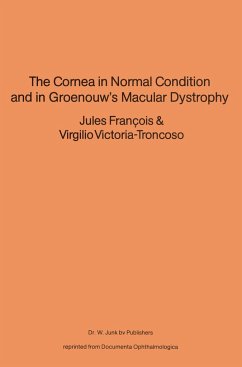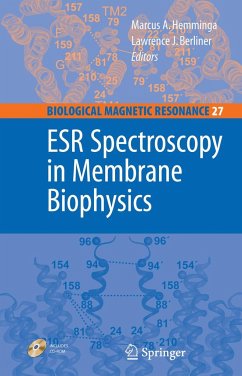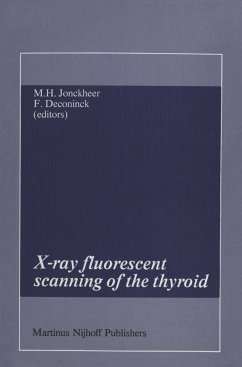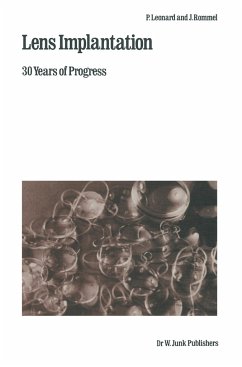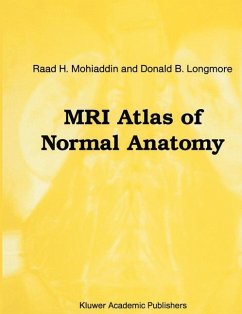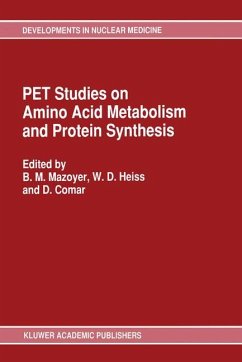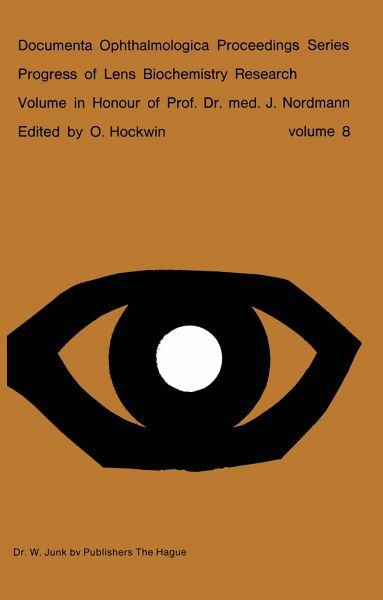
Progress of Lens Biochemistry Research Volume in honour of Prof. Dr. med. J. Nordmann
Volume in honour of Prof. Dr. med. J. Nordmann
Herausgegeben: Hockwin, O.

PAYBACK Punkte
20 °P sammeln!
On August 25,1976 Prof. Dr. med. JEAN NORDMANN, Emeritus Professor of Strasbourg University, will celebrate his 80th anniversary. The task of paying tribute to Professor NORDMANN's many services to ophthalmology in a way worthy of the occasion is so difficult that we decided to concentrate on the focal point of his life's work. In this issue scientists engaged in lens research from allover the world offer reports of their latest findings together with their best wishes and felicitations as a birthday gift to the Nestor of lens research. They thereby express their gratitude to Professor NORDMAN...
On August 25,1976 Prof. Dr. med. JEAN NORDMANN, Emeritus Professor of Strasbourg University, will celebrate his 80th anniversary. The task of paying tribute to Professor NORDMANN's many services to ophthalmology in a way worthy of the occasion is so difficult that we decided to concentrate on the focal point of his life's work. In this issue scientists engaged in lens research from allover the world offer reports of their latest findings together with their best wishes and felicitations as a birthday gift to the Nestor of lens research. They thereby express their gratitude to Professor NORDMANN, who, with the lifelong in defatigable enthusiasm of a scientist, has most successfully persued the prob lems of lens metabolism. It is our sincerest hope that we may look forward to many more years in which to take advantage of Professor NORDMANN's superior knowledge. Among the contributions to this festive donation we miss the works of some authors who have always held Professor NORDMANN's special inter est. The editor has received several letters of longstanding friends who would have liked to submit a manuscript but had been unable to meet the deadline: Professor NORDMANN may rest assured that they, too, belong to the great number of congratulators from our field of research. We have been able to make this dedication thanks to Professor HENKES who readily agreed to publish our contributions in Documenta Ophthal mologica. Dr. Junk publishers have done their utmost to ensure prompt publication.



